Ai Weiwei, he always seems to catch the crowd, media and the world’s attention easily.
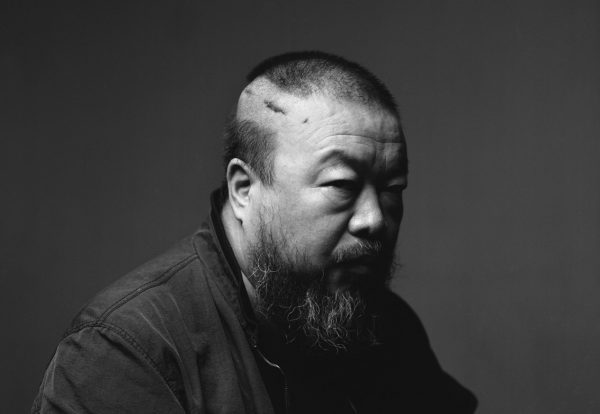
Some of his refugee themed work in recent years caused an uproar but he turned a deaf ear to these criticisms. Awhile ago for a public art installation project, he touched on this sensitive subject by using 14,000 refugee-used life jackets to adorn the exterior pillars and columns of the Berlin Concert hall (Konzerthaus Concert hall).
This project used 14,000 life jackets which were worn by Syrian refugees when they travelled into Europe from Lesbos, Greece. This installation debuted on the 14th of February with thousands of life jackets surrounding the pillars at the Berlin concert hall…. A life boat was hanging on the porch in the middle, with the words “安全通道 (safe passage)” written on it.
For quite some time, this particular work shocked the art world as controversies and criticism came in from all over. Many people speculated whether he would stop creating similar works.
But now, just a few months have passed and Ai Weiwei is back!
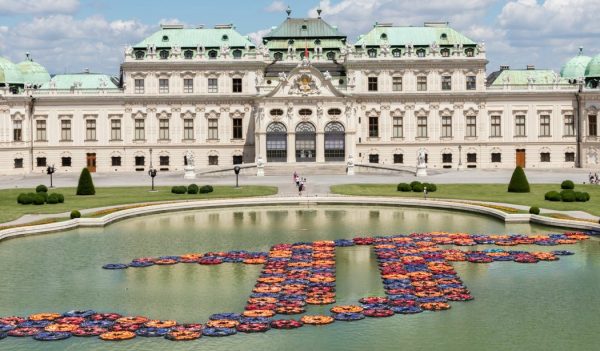
Last month on July 16, 2016, in Vienna, Austria, Ai Weiwei’s first solo show opened as scheduled. The most striking part of this show “Translocation – Transformation”, are the 1005 pieces of brightly colored life jackets floating on the surface of the baroque style resort pool in the Belvedere Palace. Every 5 life jackets form a Lotus-like circle and if you see it from above, you can see 201 ‘Lotus blooms’ scattered closely together into a huge letter “F”.
Yes, be it refugee themes or life jackets, Ai Weiwei took concrete actions to inform the world that he is back! Truly, what doesn’t kill you makes you stronger.
AI WEIWEI
“Translocation – Transformation”
14 July 2016 to 20 November 2016
21er Haus
For now, firstly let us look at some earlier recaps of the controversial life jacket installation at the Berlin Concert Hall (Konzerthaus Concert Hall).
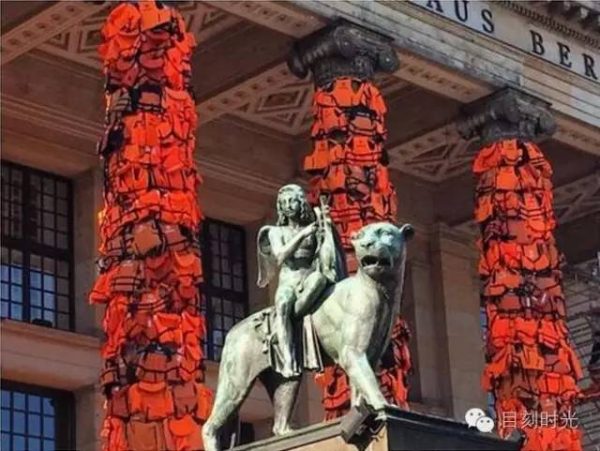
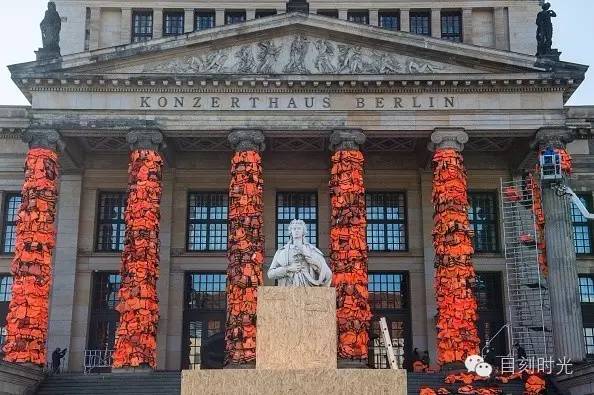
For the ‘Translocation – Transformation’ exhibition, the inspiration behind ‘F Lotus” came about when Ai Weiwei witnessed the refugee history while vacationing in Lesbos, Greece. These life jackets symbolise the drowning and death of the Syrian refugees during their escape across the Mediterranean Sea lured by human smugglers. As for the “F” alphabet layout, ‘It is up to each person’s own interpretation.’ Ai Weiwei said.
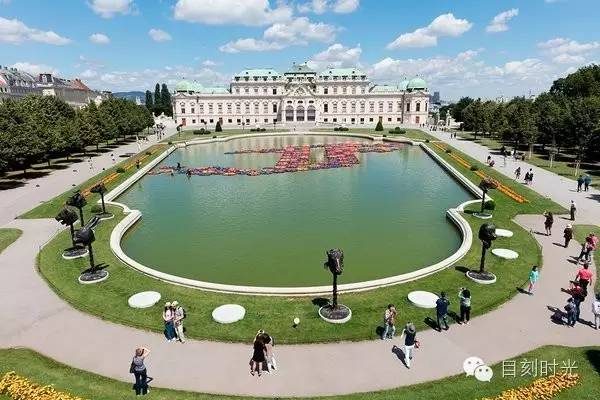
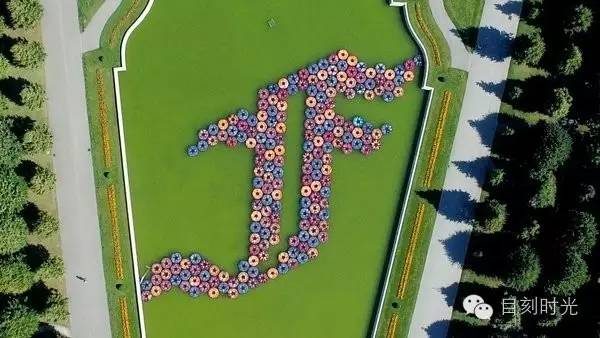
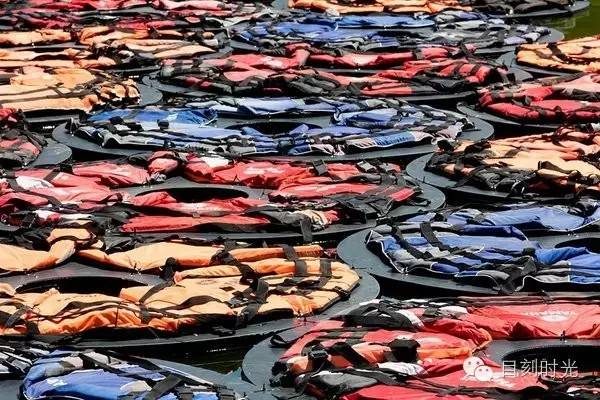
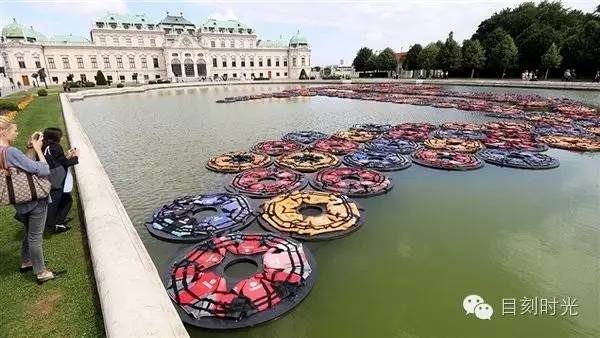
There are other series of works during the exhibition. One focus is the reorganization of the Ming Dynasty, “Jia Temple” installation, which was showcased last year during Ai Weiwei first solo exhibition in Beijing. This is the first time “Jia Temple” is exhibiting overseas. A 14-meter-high late Ming shrine structure was set up in a bright house and the media press conference was conducted beneath its wooden columns and beams.
In the last 10 years, Ai Weiwei held over one hundred solo exhibitions, mostly abroad. During this exhibition in Vienna, he made a rare appearance during the opening ceremony. He said the pavilion 21er Haus is a 1950’s building, “a year younger than I, and (our restructured) Late Ming shrine has several hundred years of history. Such a large scale of blending the old and new architectures together is more difficult than what we can imagine, but Art made it possible. This is a miracle for me”. Ai Weiwei expressed difficulty in attending his solo exhibition opening at first, as ” What needs to repaired, I have to complete it before the opening. ”
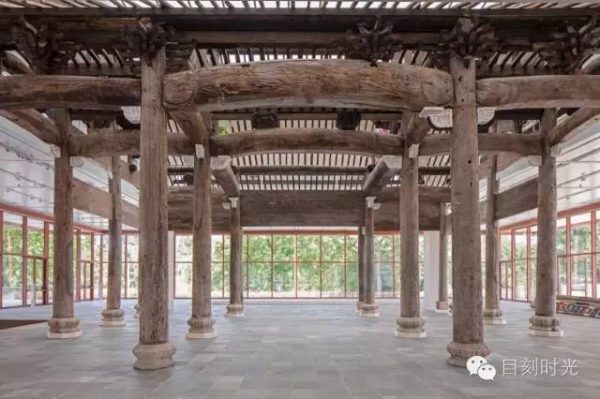
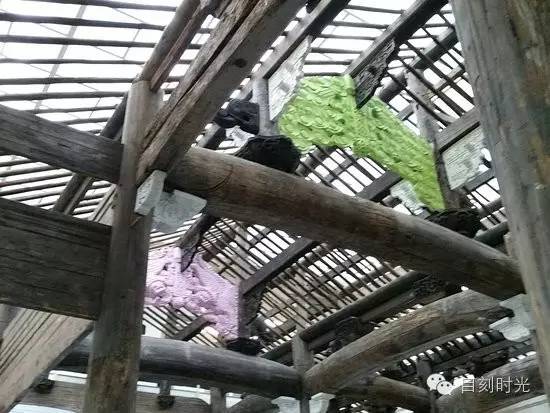
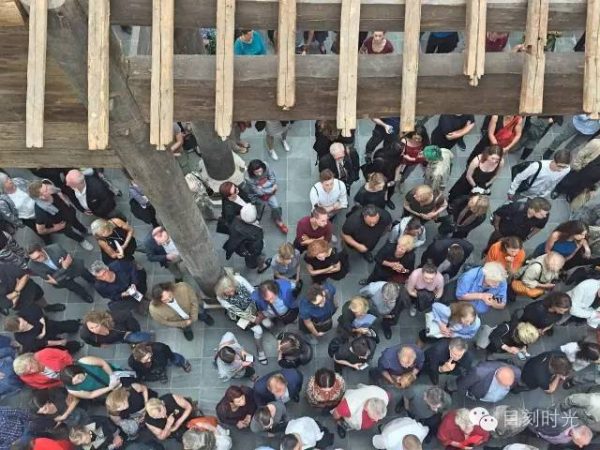
In 2013, Ai Weiwei recovered ruins of the ancient shrine at a high premium and invited a number of woodwork craftsmen using more than 1,300 large and small wood building materials, original sculpture and painting substitutes, and re-rendered the look of the original shrine hall. However, two brushes of pink and emerald green colors indicated the contemporary aesthetics thinking within the traditional.
Also part of the exhibit are ten thousand teapot nozzles manufactured during the Song Dynasty and the Qing Dynasty spread across the floor of the 23er Haus space.

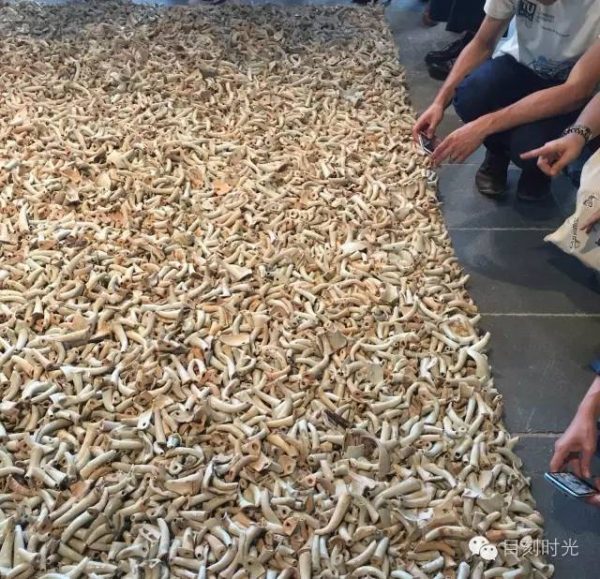
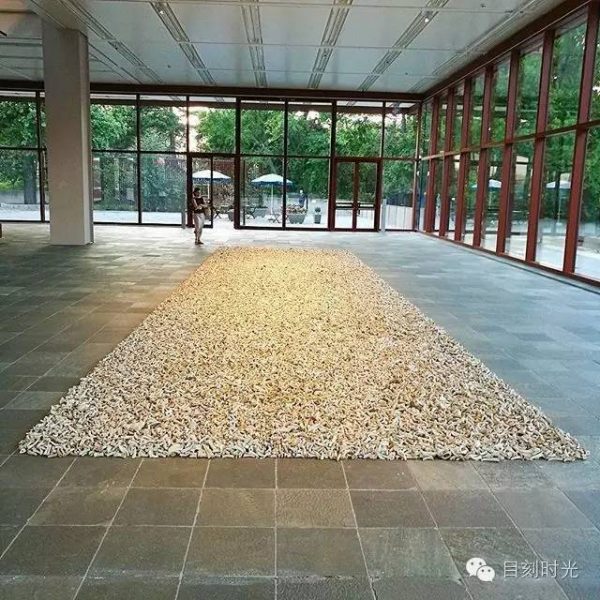
Surrounding the Baroque style pool is Ai Weiwei’s important work “12 Zodiacs.” This 12 monumental bronze animal heads are Ai Weiwei’s re-interpretation of the original animal sculptures displayed at the Yuan Ming Garden which were destroyed by the British and French troops in the 1860s. In 2011, “ 12 Zodiacs” was exhibited at the Pulitzer Fountain in New York.
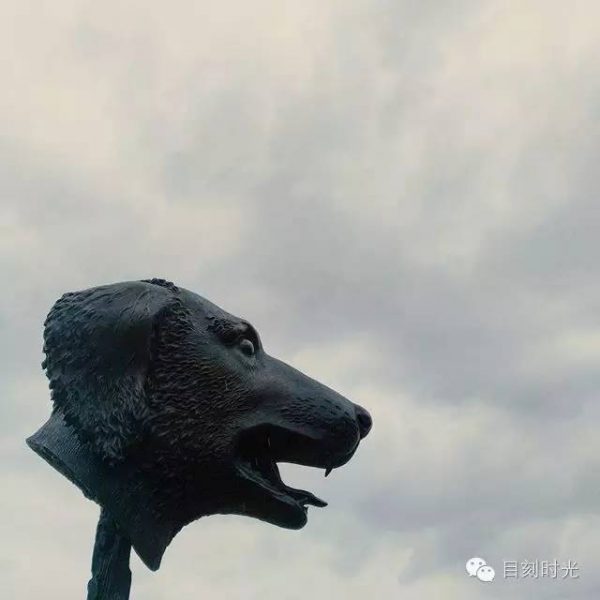
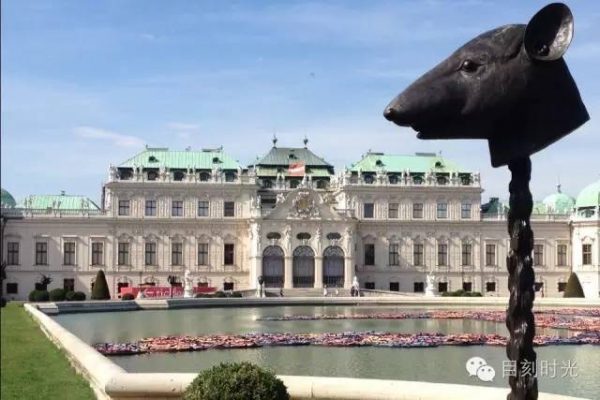
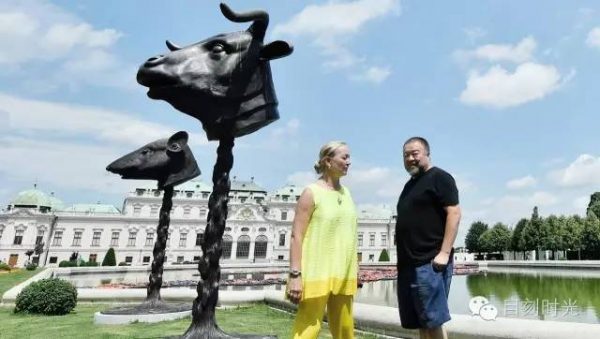
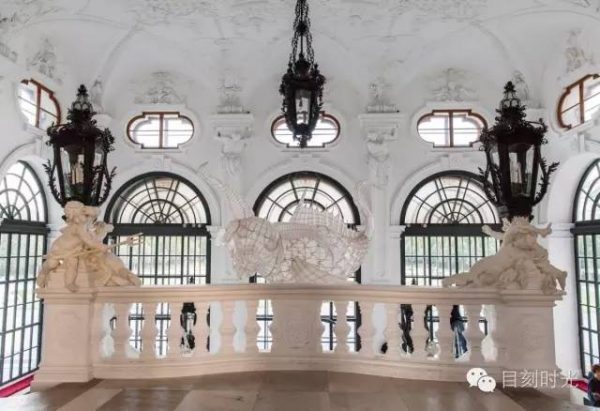
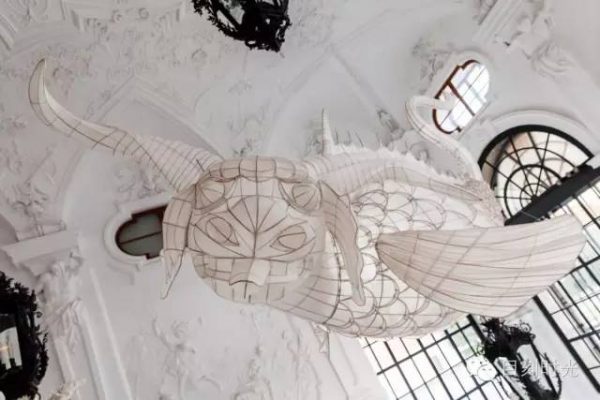
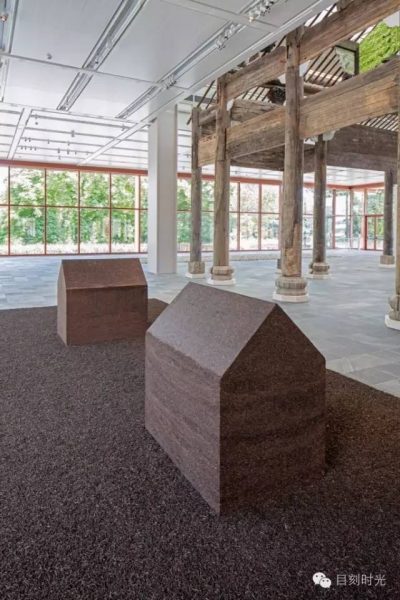
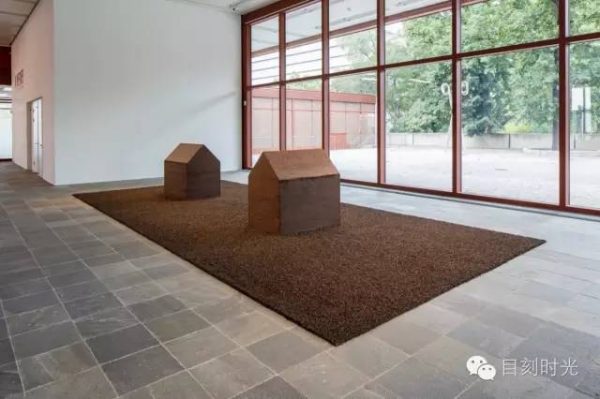
Curator Alfred Weidinger mentioned during the introduction of ‘Translocation- Transformation’ that every position needs a re-conversion process of adaptation, as well as simultaneous changes in the heart and identity. Alfred believes that through Ai Weiwei’s nomadic personal life experiences, the artist’s “social and political existence cannot be simply localised by their environment, traditions and cultures.”
We wonder where Ai Weiwei’s ‘nomadic’ direction will take him to next time?
We are looking forward.
